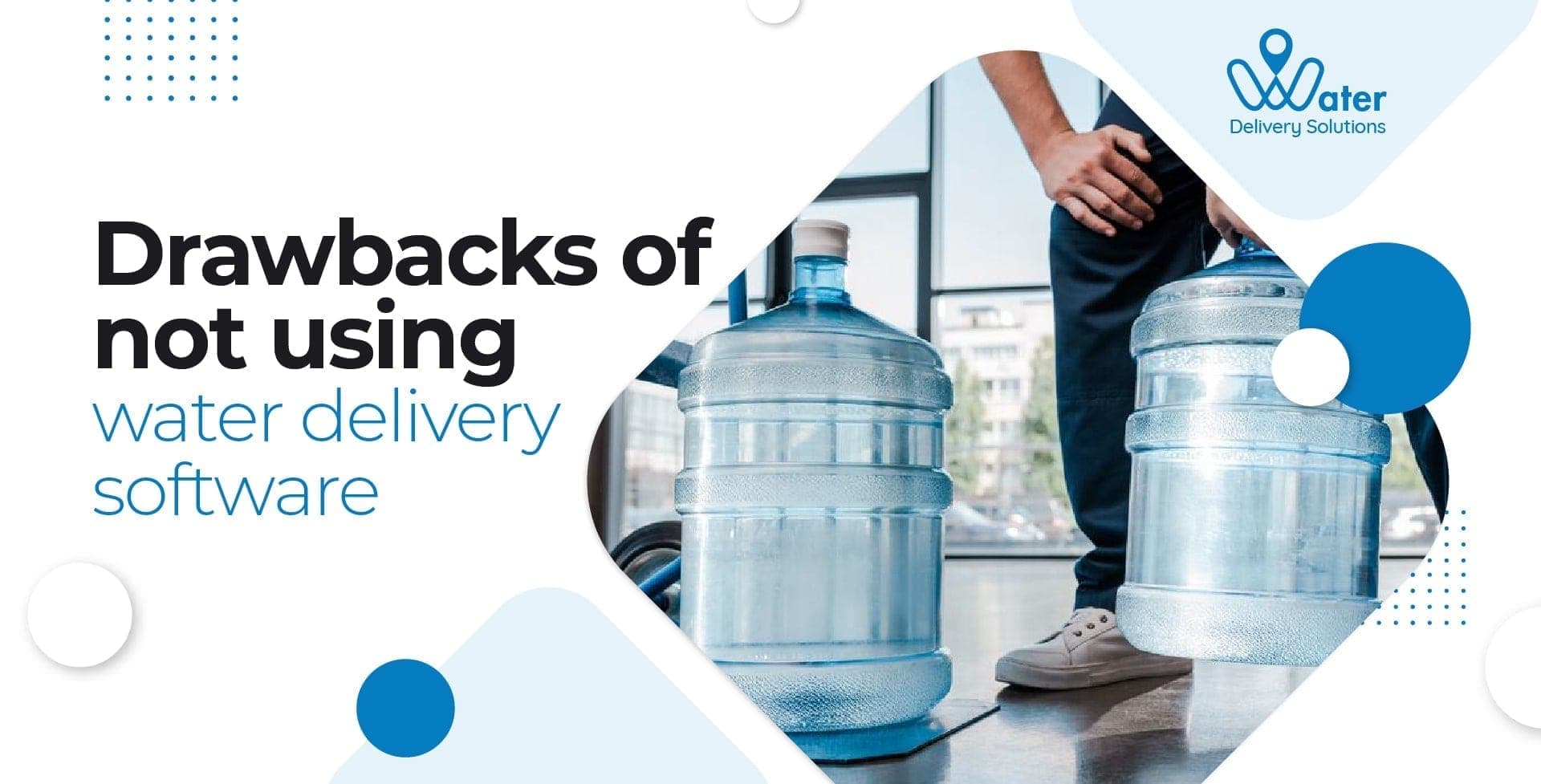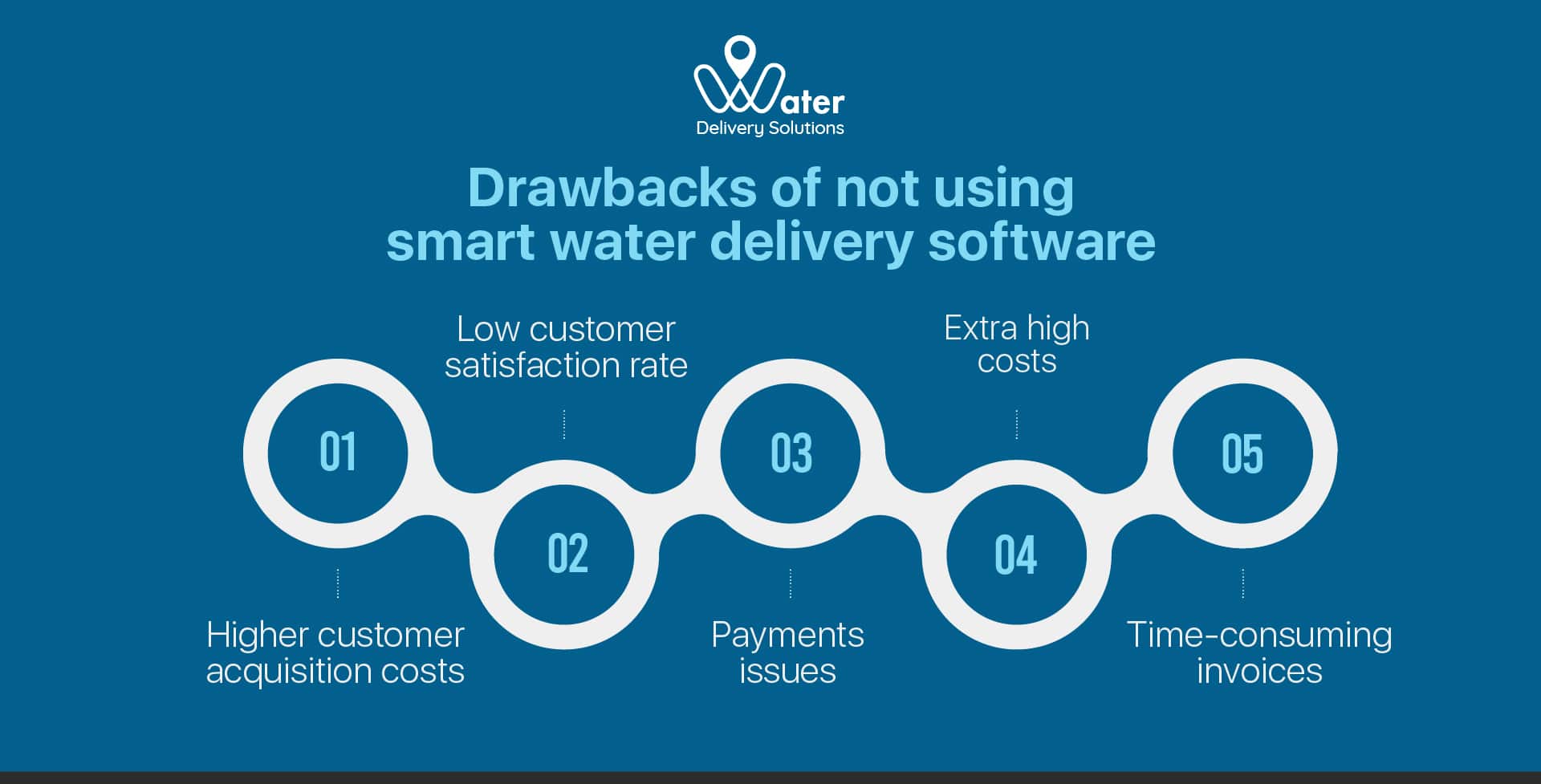Water delivery software is a boon for the water delivery industry. Consumer demand for ever-faster delivery is growing. Customers are more willing to pay for preferred options such as one-hour or same-day delivery since they are no longer happy with two-day delivery.
Businesses have turned to dedicated delivery management solutions to meet these expectations for reasonably priced speed and simplicity. These various software solutions target various aspects of the delivery supply chain, ranging from back-end operations management to customer last-mile touchpoints.

However, any management software should include the complete delivery process, not just a single component, in order to have a significant impact on your KPIs.
Some drawbacks of not using smart water delivery software:
Higher customer acquisition costs
Without a D2C website or mobile solutions, businesses are unable to acquire new customers via digital marketing, hence unable to scale business sales and revenue. It results in higher costs to acquire customers.
The low customer satisfaction rate
Without direct customer feedback or reviews, businesses are unable to understand customer sentiments & product improvements & service improvements.
Payments issues
Without having a digital way of accepting payments chances to lose sales that leads to bad customer experiences, payments recovery would become complex which results in negative cash flow and affects business growth negatively.

Extra high costs
Without going digital, businesses are depending on paperwork. It not only takes more employees’ time but there are higher risks of human errors and missing information.
Time-consuming invoices
Without water delivery management software, there would be no automated daily invoices or transaction notifications. It can result in customer disputes at the time of payment recoveries, which results in losing those customers and increasing the churn rate.
Improving delivery management with artificial intelligence
Timing Prediction – This might be used to learn more about how long drivers spend in the warehouse or other loading locations, how long they spend en route to the delivery destination, or how long they remain on site. This information can then be used to optimize delivery operations as well as produce more accurate delivery time predictions for clients. Drivers of huge trucks, for example, may have difficulties parking in residential areas or simply obtaining parking places in urban regions. Predictive artificial intelligence can be used to forecast where parking will be available or to maximize dispatching by choosing the vehicle that is best suited to a certain delivery location.
Forecasting Demand – Retailers are scrambling to find ways to ship goods that have been locked up in their stores. By enabling the ship-from-store approach and understanding where and when things will be in demand, shippers may avoid wasting inventory, maintain product availability, and make same-day deliveries more realistic.
Conclusion
A business must provide exceptional, fully-branded deliveries while improving efficiencies across the organization to be successful in today’s on-demand market.
Choosing a comprehensive delivery management platform to manage scheduled delivery, on-demand delivery, or both is critical to achieving both of these goals. Success will be determined by combining your existing infrastructure with cutting-edge delivery management tools. Get a free trial with us to know more.

He loves to explore. His passion for helping delivery industries in all aspects flows through in the vision he has. In addition to providing smart solution to make delivery process flawless, Ravi also likes to write sometimes to make it easier for people from business industry looking for digital solutions.
